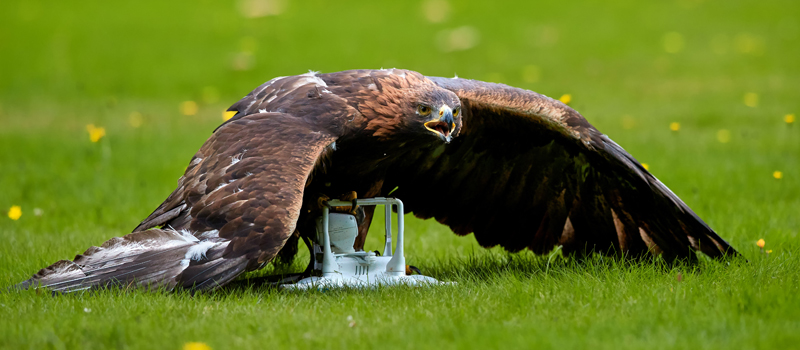Do Birds Attack Drones. Drones have become increasingly popular for various purposes, from capturing breathtaking aerial footage to assisting in search and rescue missions. However, as these flying gadgets become more common, they occasionally encounter unexpected challenges from nature. One such challenge is the potential for birds to attack drones. This comprehensive guide will delve into the intriguing phenomenon of birds attacking drones, providing insights, reasons behind these attacks, and tips for drone enthusiasts to protect their equipment.
Understanding the Bird-Drone Interaction
- Bird Behavior and Drones: Birds, like many creatures, are naturally curious. They often perceive drones as intruders in their airspace, leading to defensive behaviors. It can manifest as aggressive attacks against the drone. When it comes to finding birds attacks drones then Holy Stone 2 Axis Gimbal GPS Drone will be a good option.
- Common Birds Involved: Certain species of birds are more prone to attacking drones than others. Birds of prey, like hawks and eagles, are particularly notorious for their aggression towards drones. Seagulls and crows also make appearances in drone attack stories.
Reasons Behind Bird Attacks
- Protection of Territory: Birds are territorial creatures, perceiving drones as threats to their nests and feeding grounds. This protective instinct can trigger attacks.
- Fear and Self-Defense: Birds may attack drones out of fear, believing them to be larger predators or a threat to their chicks. In such cases, they act out of self-defense.
- Aggressive Nesting Behavior: During the breeding season, some bird species become exceptionally territorial and aggressive. Drones may inadvertently intrude upon their nesting areas, provoking attacks.
Protecting Your Drone from Bird Attacks
If you’re concerned about your drone falling victim to avian aggression, here are some strategies to safeguard your equipment:
- Maintain Safe Altitude: Flying your drone at a safe and respectful altitude can reduce the likelihood of bird attacks. Keep your drone well above any nesting sites or known bird habitats.
- Use Propeller Guards: Propeller guards can help protect your drone’s propellers from damage during bird attacks. They are a barrier between the bird and your drone’s delicate parts.
- Fly Quietly: Some drones are quieter than others. More silent drones are less likely to attract birds’ attention, reducing the chances of an attack.
- Mimic Bird of Prey Shapes: Some drone enthusiasts have found success by attaching small, harmless-looking raptor-like silhouettes to their drones. Birds often perceive these shapes as threats and may stay away.
Case Studies
To illustrate the real-world encounters between birds and drones, let’s look at a couple of case studies:
- Hawk vs. Drone: In one incident, a drone pilot captured footage of a hawk repeatedly attacking their drone. The bird was likely protecting its territory, mistaking the drone for a rival bird.
- Seagull Attacks: Seagulls have been known to attack drones flying near the coast. Their attacks are often linked to their territorial nature and the perceived threat posed by drones.
FAQs
Can birds cause significant damage to drones?
Yes, birds can damage drones, particularly the propellers and sensitive electronic components. It’s essential to take precautions to prevent bird attacks.
Are there any laws against drones flying near bird habitats?
Laws regarding drone flight near bird habitats may vary by location. Researching and complying with local regulations to protect wildlife and your drone is advisable.
Do drones pose a danger to birds?
Drones can disrupt bird behavior and cause stress, especially when flown too close to nesting sites. Responsible drone operation is essential to minimize these effects.
Conclusion
While the notion of birds attacking drones may seem unusual, it is a reality that drone enthusiasts should be aware of. Understanding the reasons behind these attacks and taking preventive measures can help protect your drone and minimize disruption to bird populations. By flying responsibly and respecting the natural world, we can continue enjoying drone technology’s beauty and benefits while coexisting harmoniously with wildlife.

